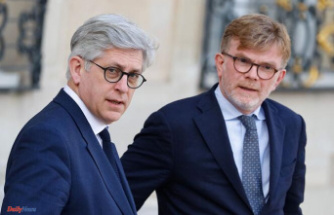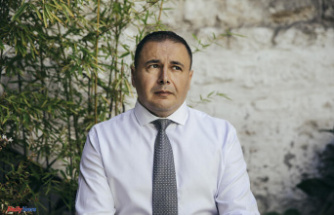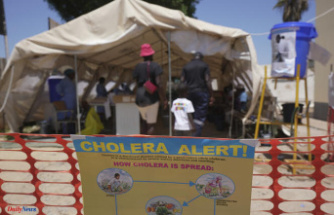The Sentinel satellites of the european network Copernicus monitor day and night the Earth
Their data come to the Laboratory for Crisis Management to coordinate the rescue teams when there is a disaster
In 2018, marks the 20th anniversary of the agreement that gave the green light to this program of observation
On the banks of bucolic Lake Maggiore, more than 2,000 researchers are working to provide independent scientific advice to the institutions of the European Union. The findings of their studies to help european politicians to make decisions and to legislate on issues as diverse as nuclear energy, genetically modified crops, polluting emissions of vehicles, the expansion of disease-carrying mosquitoes or the crisis by the refugee arrivals.
"politicians usually receive many pressures and they need data scientists who can be reliable", sums up one of the communication officers in the service of science and knowledge of the European Commission, which has been installed in Ispra the leading institutes of its Joint Research Centre (in English, Joint Research Center, JRC).
This small town in Lombardy of little more than 4,000 residents welcomes, among others, the Institute for Environment and Sustainability, which is in charge of the issues that have to do with the health and protection of consumers. But also from this municipality in the north of Italy is monitored by the disasters that affect any corner of the world. It is possible thanks to the fleet of earth observation satellites Copernicus, who watch over the planet, day and night, and which send continuously its data back to Earth.
class="icon-foto_16_g"> The fleet's satellite programme Copernicus. The Sentinel 4, 5 and 6 are to be launched in the next few years. THATAccording to the scientist at the JRC Alan Belward, head of the management of land resources, basically, these satellites provide data that are used in six areas: monitoring of the earth's surface, oceans and atmosphere, climate change, emergency management and security.
"together, these seven satellites combined allow you to observe day and night, all weather conditions, even when it is cloudy, and in radar and optical," says Belward. "Allow us to make systematic observations and monitoring globally the planet. That is to say, give us a vision of what is happening all around the world," he said.
The European Laboratory for Crisis Management of Ispra is one of the main centres of this network. A large screen, chairs the operating room, several watches set the time in different parts of the world and a device of warning of tsunami reports of the recent earthquakes that have shaken the Earth and of his magnitude. Forest fires, floods, earthquakes, hurricanes... from here you can set alerts for natural and humanitarian disasters, and manages all the information available before, during and after the crisis.
class="icon-foto_16_g"> is BURNING GREECE. The 2018 summer has been a tragedy for Greece. Two large fires were declared on the 23rd of July in the region of Attica, causing nearly a hundred dead and heavy losses. The map shows the situation in Geraneia. In yellow, the areas killed.The floods (33%) are the main cause that has enabled the european service of emergency management, followed by fires (19%), thunderstorms (13%) and earthquakes (6%), according to published this research.
Such and as reflected in the estimates of the JRC, it is expected that the economic losses by natural disasters to increase markedly in the coming decades. Thus, while at present the annual cost of flooding is around 5,000 million euros, it is estimated that in 2050 will be between 10,000 and 20,000 million, and in 2080 it could reach the 42,000 million. The picture is not more encouraging in regards to the drought. Of the 3,000 million current would be passed along to the 5,000-to 25,000 million by mid-century, and to 36,000 in 2080.
on the other hand, the latest annual report from the JRC on forest fires, published in October, warning that the fire season in the european countries has been expanded and now take place during different times of the year. With 700,000 hectares of land killed, say the scientists of the JRC, 2017 will be remembered as one of the years most devastating in Europe. According to the data of the Information System of Forest Fires in Europe (EFFIS), the majority of the fires were caused although the heat and lack of rainfall brought about by climate change have contributed to more severe and occur more often small fires that ended up being out of control.
class="icon-foto_16_g"> ICEBERG DRIFT. In July, the detachment of an iceberg of great size to the west of Greenland caused a potentially dangerous situation for navigation and became a track of its progress. The map shows the area of Innaarsuit the past 26 of July.
We have to protect the Land; it is the best planet that we know of
to Compare the evolution of the territories allows them to study changes in the Earth including the evolution of pollutant emissions in the atmosphere, the decrease of the layer of ice in the Arctic, the amount of water available, the rise in the sea level or the expansion of desertification.
the Jan Woerner, director of the ESA, this program, which has already with 150,000 users -including researchers, public authorities, private companies and citizens, has made it possible for Europe to be autonomous and not rely on anyone else in the access to data from space. Until 2020 you are going to invest in Copernicus 7,400 million euros and, according to estimates of the EU, the program will generate profits of more than 60,000 billion to the european economy up to 2035.
however, Hans Bruyninckx, executive director of the European Environment Agency, emphasizes that "we must not only use the data from the satellites to obtain information. We should use them to change things." In the same line, Jan Woerner calls for joining efforts to protect the environment, it shows "optimistic about the future" and remember that "ours is the best planet that we know of. The director of the ESA disagrees with the now deceased astrophysicist Stephen Hawking, proponent of reaching out to other worlds to save Humanity. "The Earth is the only planeta that we have".
According to the criteria of
Learn more Date Of Update: 19 November 2018, 20:00











